Imagine a special food from Japan called Funazushi that some people around the world find fascinating and delicious. It’s a traditional dish made by fermenting fish near Lake Biwa in Shiga Prefecture, a beautiful place in Japan. Funazushi has a long history and prepared with great care and skill. As you read this article, you’ll learn about the interesting background of Funazushi, how it’s made, and why its unique taste makes it a must-try for people who enjoy trying new and adventurous foods.
What is Funazushi?
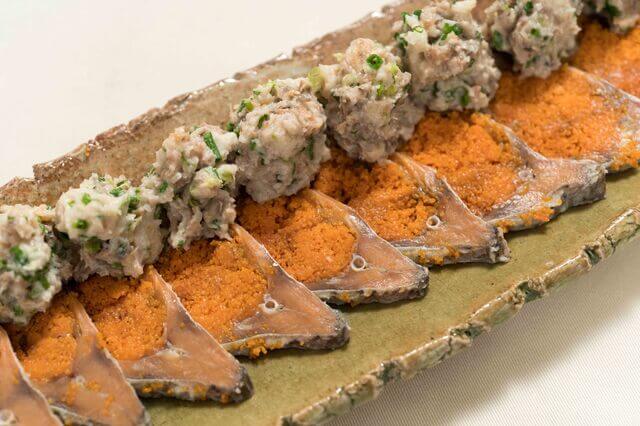
Funazushi, a traditional Japanese dish, gains recognition for its unique fermentation process. The dish originates from the region around Lake Biwa in Shiga Prefecture, Japan. To create Funazushi, nigorobuna fish caught in early spring are pickled in salt. Later, around the middle of summer, they are washed and pickled in rice for lactic acid fermentation. As the New Year approaches, the dish undergoes further fermentation, resulting in increased sourness and softened bones, rendering it ready to eat. Funazushi’s taste is exceptional and delightful, which continues to captivate a wide audience. The dish is characterized by its strong aroma, rich umami taste, and soft, slightly slimy texture.
Funazushi History
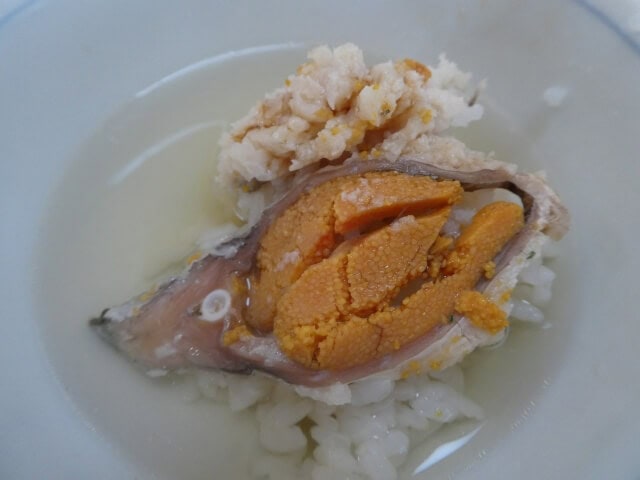
Funazushi has a long history and was presented to the Imperial Court from Omi (Shiga Prefecture) as a special product in the Nara period. There is also a theory that funazushi originated from rice grains and small fish that birds liked to build their nests for laying eggs and then fermented them. The dish was born out of the need to preserve the abundant catch of nigorobuna fish, a type of crucian carp found in the lake.
Funazushi’s fermentation process was developed as a method of preservation at a time when refrigeration was not available. The technique involved layering the fish with salt and rice in wooden barrels or earthenware pots. Over time, natural lactic acid bacteria present in the fish and in the environment would initiate the fermentation process. The combination of salt, rice, and bacteria transformed the fish, creating a unique and pungent delicacy.
Originally, Funazushi was a practical and efficient way to store fish for extended periods, particularly during the winter months when fresh food was scarce. Over time, it became not only a preservation method but also a celebrated culinary tradition in the region. The distinctive taste and strong aroma of Funazushi gradually gained popularity, and it became a sought-after specialty dish in the local cuisine.
When is Funazushi best to eat?
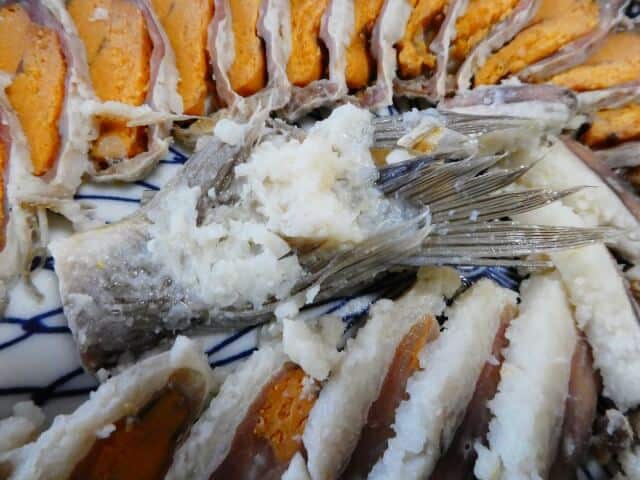
Regarding the best time to eat Funazushi, locals recommended to wait until around the New Year. At this point, the fermentation has progressed, resulting in increased sourness and softened bones. The flavors become more pronounced and the texture becomes tender. It is during this time that locals considered this dish to be at its prime for consumption. It is worth noting that Funazushi is an acquired taste due to its intense and pungent flavor profile. Some individuals may prefer it when the fermentation process is not as advanced, resulting in a milder taste.
Health benefits of eating Funazushi
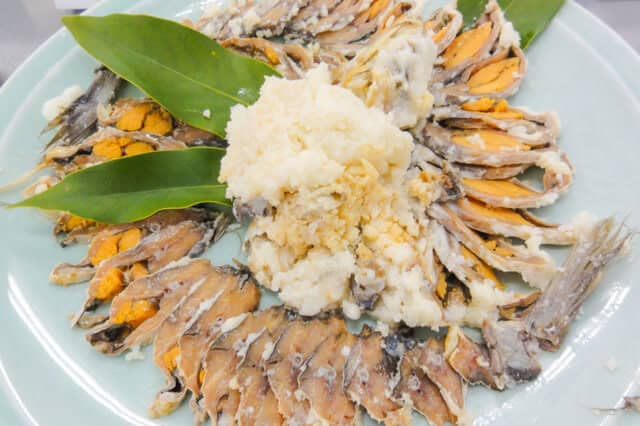
Consuming Funazushi, a fermented Japanese delicacy, may offer health benefits due to its probiotics, nutrient density, improved digestion, enhanced nutrient absorption, and potential immune system support. Funazushi contains beneficial bacteria that promote a healthy gut microbiome, while also providing high-quality protein, omega-3 fatty acids, vitamins, and minerals from the nigorobuna fish. The fermentation process of Funazushi makes it easier to digest and enhances nutrient absorption. Additionally, studies suggest that fermented foods like Funazushi can positively impact the immune system.
What is a funa?
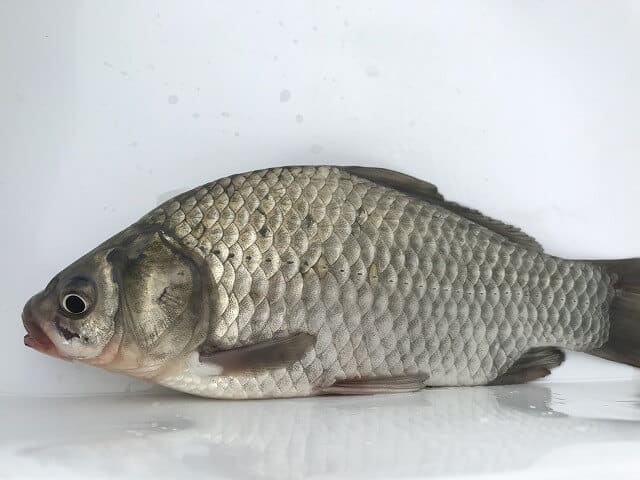
In Japan, a crucian carp is known as “funa” (鮒) or “hanakoi” (花鯉). The crucian carp is a freshwater fish species that is native to Japan and is highly regarded in Japanese culture. Often considered a symbol of resilience and tenacity because of its resistance to deterioration of water quality and can continue to go even in dirty ponds. In Shiga Prefecture, funazushi made with Nigorobuna. It has a strong sour taste and smell, and even Shiga residents have different likes and dislikes.
Funazushi FAQ
- How long does the fermentation process for Funazushi typically take?
The fermentation process for Funazushi typically takes several months to a year. After the initial pickling of nigorobuna fish in salt, the fish is then packed in rice for the lactic acid fermentation to occur. During this period, the fish undergoes a transformative process, developing its distinct flavor and texture.
Funazushi Recipe
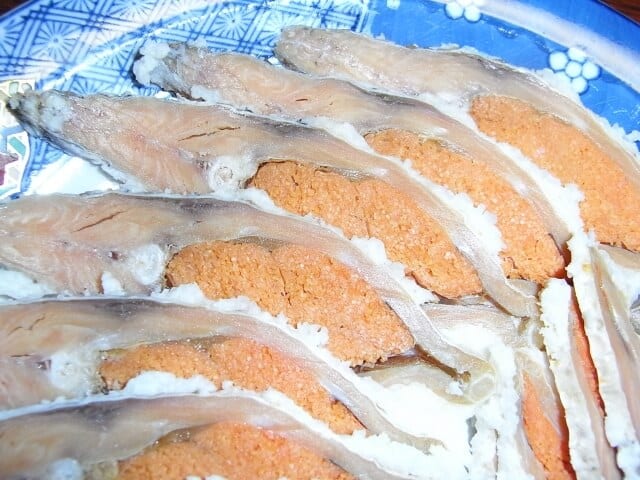
Funazushi Ingredients
| Ingredients of Funazushi for 10 persons | Measurements |
|---|---|
| Crucian carp | 1000g (in raw weight) |
| Rice | 400 to 800g |
| Salt for salt cutting 10 kg | 1000g |
| Rice salt | 200g (0-1000g as needed) |
| Sake or vinegar | 110g |
How to make Funazushi?
When the crucian carp enters, scrape off the scales. Remove the gills and remove the three bones. Remove the internal organs without damaging the egg membrane.
Remove the bitter balls (gallbladder) without crushing them. Remove the swim bladder just below the spine. After washing with water, drain the water.
Fill the oral cavity and abdominal cavity of the crucian carp with salt, then sprinkle the whole carp with salt. They are weighted and salted for at least two months while the water is rising.
Cook the rice and mix the rice with salt, if there is a lot of salt, the rate of fermentation slows down. Use 1-2 cups of sake or vinegar in the wash water.
Wash the salted carp under running water and remove the remaining scales and internal organs with a bamboo spatula. Wrap the crucian carp in a paper towel to drain the water well.
Fill the tub with a pickle bag, spread the rice, and arrange the crucian carp on top so that it does not overlap. Put the rice on top and press firmly to expel the air. Furthermore, crucian carp, rice, crucian carp, and rice are piled up.
Where to buy Funazushi
Hama Tomoe 舟寿司 とも栄
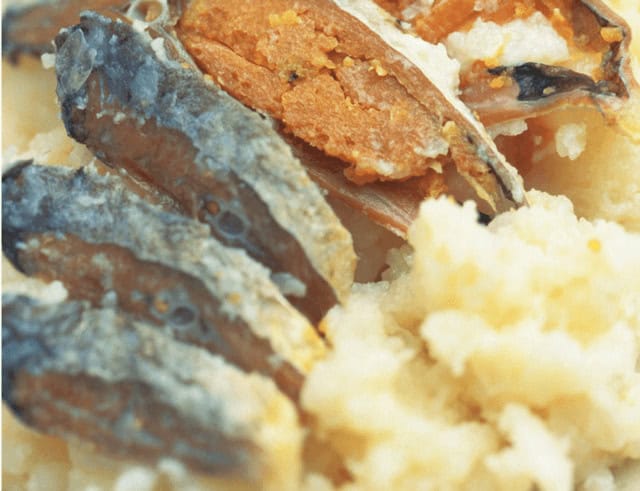
This is a small restaurant where you can enjoy “genuine Funazushi” made by picking carp caught in Lake Biwa at home. Funazushi, which has been pickled in salt and softened to the bones, has little odor and is delicious even for beginners. Here, you can enjoy traditional funazushi as a course meal.
Shizukaro (しづか楼)
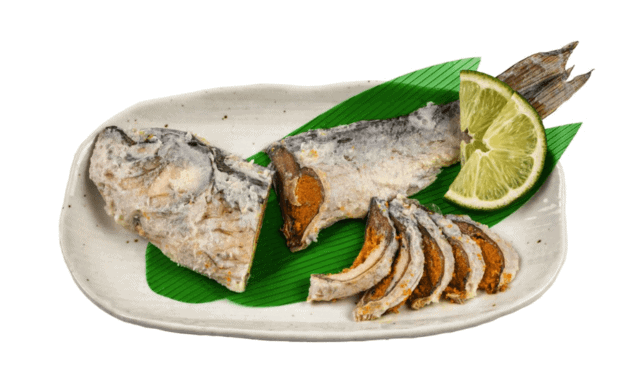
“Shizukaro” is a long-established restaurant located in a corner of the port town of “Katata Fishing Port”, which has prospered as an important point for lake transportation since long ago. You can enjoy not only Funazushi but also authentic Lake Country cuisine. Duck hot pot in winter, eel and sweetfish from Lake Biwa. And no matter what, funa sushi! The funazushi here is made in-house so that everyone can enjoy it without any peculiarities, and you can even take it home as a souveni
Sakamotoya (阪本屋)
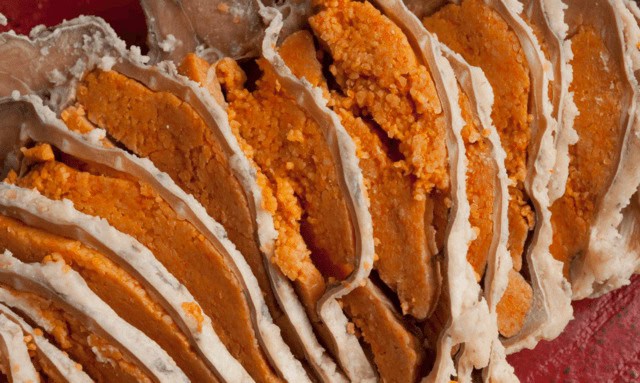
There is a store near Biwako Hamaotsu Station. Here, you can purchase Funazushi as a souvenir at the shop front. Funa sushi caught in Lake Biwa is marinated in Omi rice, and you can enjoy high-quality funa sushi made with time and effort. Locals highly regarded this store in Shiga Prefecture for its flavorful Funazushi and warm hospitality.
Final Thoughts
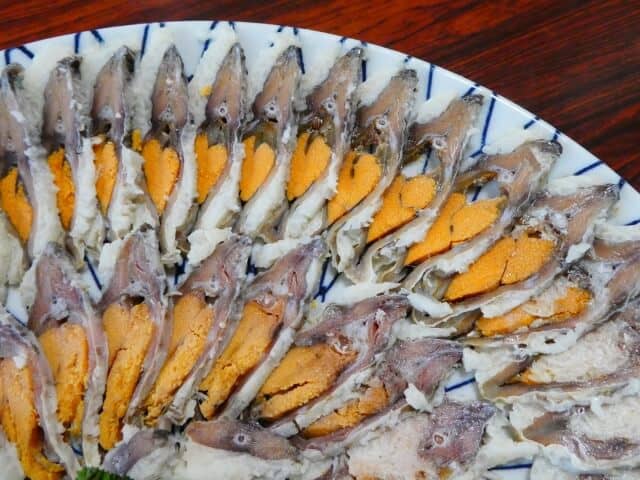
We hope that by learning about Funazushi, you have gained valuable knowledge about this amazing Japanese food. From its ancient beginnings to how it’s made, Funazushi is a special dish with a lot of history. Now that you know more about it, we encourage you to try it for yourself and go on your own food adventure. Keep exploring the diverse and fascinating world of Japanese cuisine and let your curiosity guide you to new culinary experiences.
You can check some Japanese seafood dishes that we know you would like to try too.




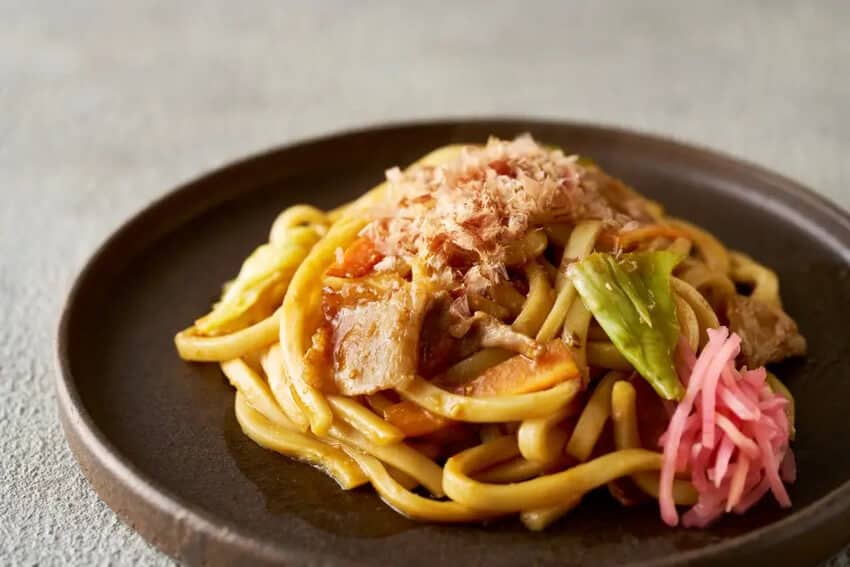

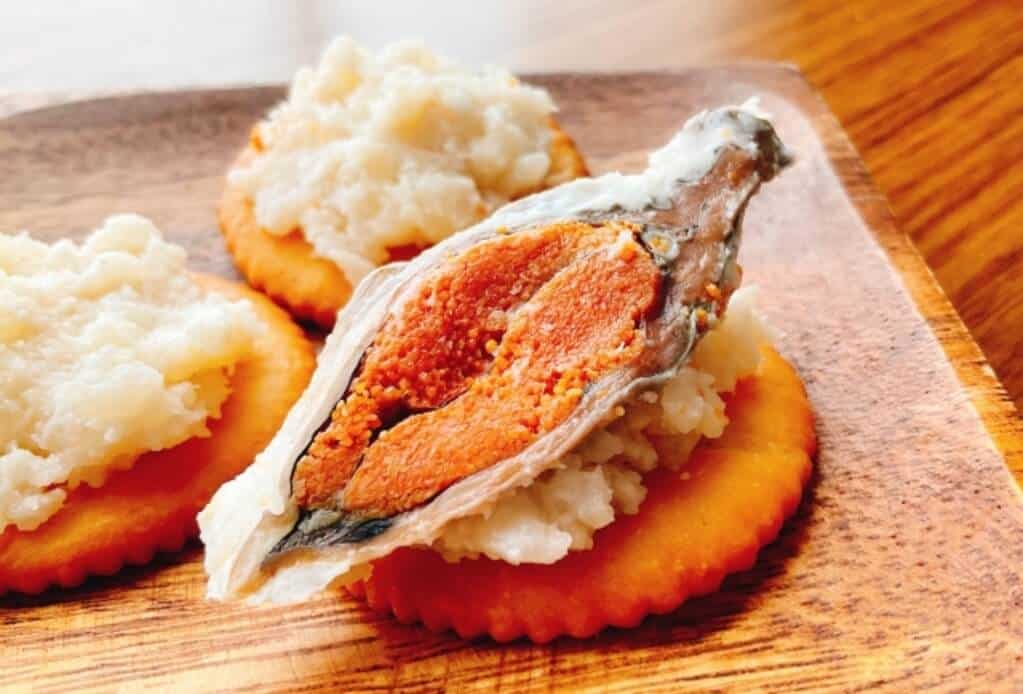
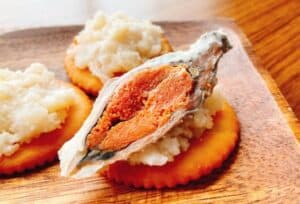
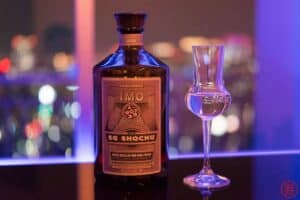
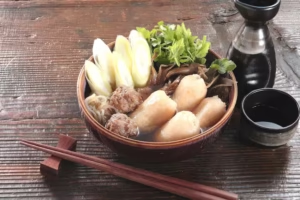
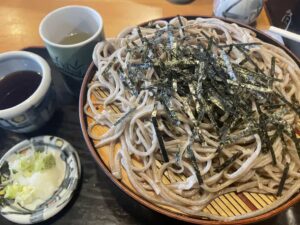
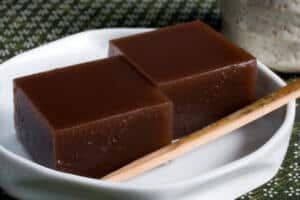
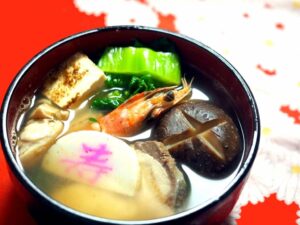
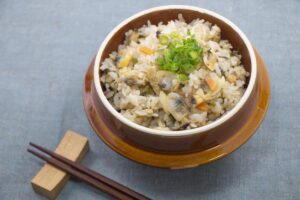
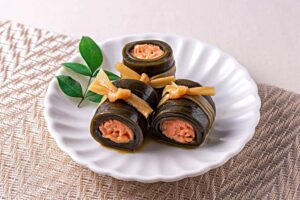
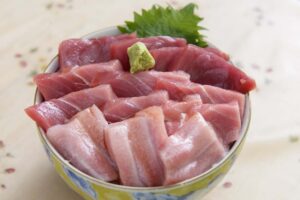
Comments